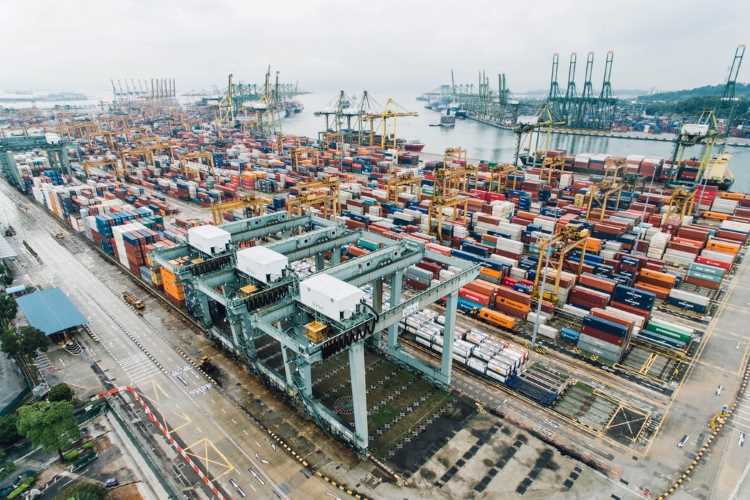
By Arvind Sharma
Strong exports growth could be the main engine of recovery for the Indian economy. The country has posted unprecedented trade figures in June despite the devastating second wave of Covid-19. Exports jumped to an all-time high of $95 billion in the April-June quarter of 2021, surpassing the earlier record of $90 billion in January-March 2020. The fact that labour-intensive sectors such as engineering goods, rice and marine products were behind the excellent exports growth would bring cheer to Asia’s third largest economy that contracted 7.3% in the financial year ended March 2021.
The growth in exports in June 2021 has been exponential, compared with the two previous months. In the first week of June 2021 itself, numbers rose by around 52% to $7.71 billion. According to data released by the ministry of commerce and industry in July 2021, exports in June 2021 grew by 47% to reach a staggering $32.46 billion. According to the ministry’s preliminary data, exports of engineering goods, gems and jewellery and petroleum products rose by 59% to $741 million, 96% to $297 million and 69% to $530 million in June 2021. This is in stark contrast with the figures of 2020 when exports fell due to the imposition of the nationwide lockdown to curb the spread of the Covid-19 pandemic.
READ I Towards a robust public health system based on universal healthcare
Exports surge past pre-Covid levels
What is noteworthy is the fact that exports in the first quarter this year have far surpassed even the pre-Covid levels. Exports which stood at $22 billion and $25 billion in June 2020 and June 2019 respectively, rose to $32 billion in June 2021. Similarly, exports in April this year grew 196% compared with April 2020 and by 17% compared with April 2019.
Commerce and Industry minister Piyush Goyal attributed the tremendous exports growth to healthy growth in engineering, rice, oil and marine products as well as related sectors. He said measures including sector-specific interventions, simplification of procedures, and extension of timelines / licences have led to the record export performance. Needless to mention, the most important factor that has led to protecting and accelerating exports is the selective imposition of lockdown restrictions at a state level this year, compared with the nation-wide lockdown announced in 2020.
There was complete stoppage of industrial activity as a response to the national lockdown measures introduced last year. This resulted in a complete halt in manufacturing and production activities. However, this year, the state governments adapted an alternate approach and restrictions were implemented cautiously with a view to ensure continuity in industrial activity. The latent demand from the previous year has also contributed to an increase in exports.
READ I Can Tamil Nadu government create a South Indian Miracle?
Structural reforms push exports growth
The increasing pace of vaccinations globally is another crucial and comforting factor. The gravity of the Covid-19 pandemic had created a fear factor that had triggered protectionism in 2020. However, the global recovery from the pandemic and availability of vaccines have firmed up confidence and this has resulted in nations across the globe gradually opening up their economies. In line with the growing numbers, the government now aims to reach the target of $400 billion merchandise exports in financial year 2022.
Additionally, structural reforms presently being undertaken by the government can potentially draw more investors and significantly boost trade numbers. These include formulation of the next Foreign Trade Policy as well as simplification of the Special Economic Zones (“SEZ”) ecosystem.
The Remission of Duties and Taxes on Export Products (the RoDTEP), which has replaced the Merchandise Exports from India scheme, came into effect from January 1, 2021. It ensures that exporters receive reimbursements on the embedded taxes, duties and levies at the central, state, and local level. RoDTEP has been introduced to increase global competitiveness of Indian exports. The details of the rates in RoDTEP are likely to be announced soon and this could further contribute to increased exports.
Strong exports performance could lead to the revival of the micro, small and medium enterprises (MSMEs), creating more jobs and strengthening consumption demand. Along with the recently announced fiscal packages, strong export performance could spur economic growth and make India an attractive destination for foreign investment.
(Arvind Sharma is Partner, Shardul Amarchand Mangaldas & Co.)
